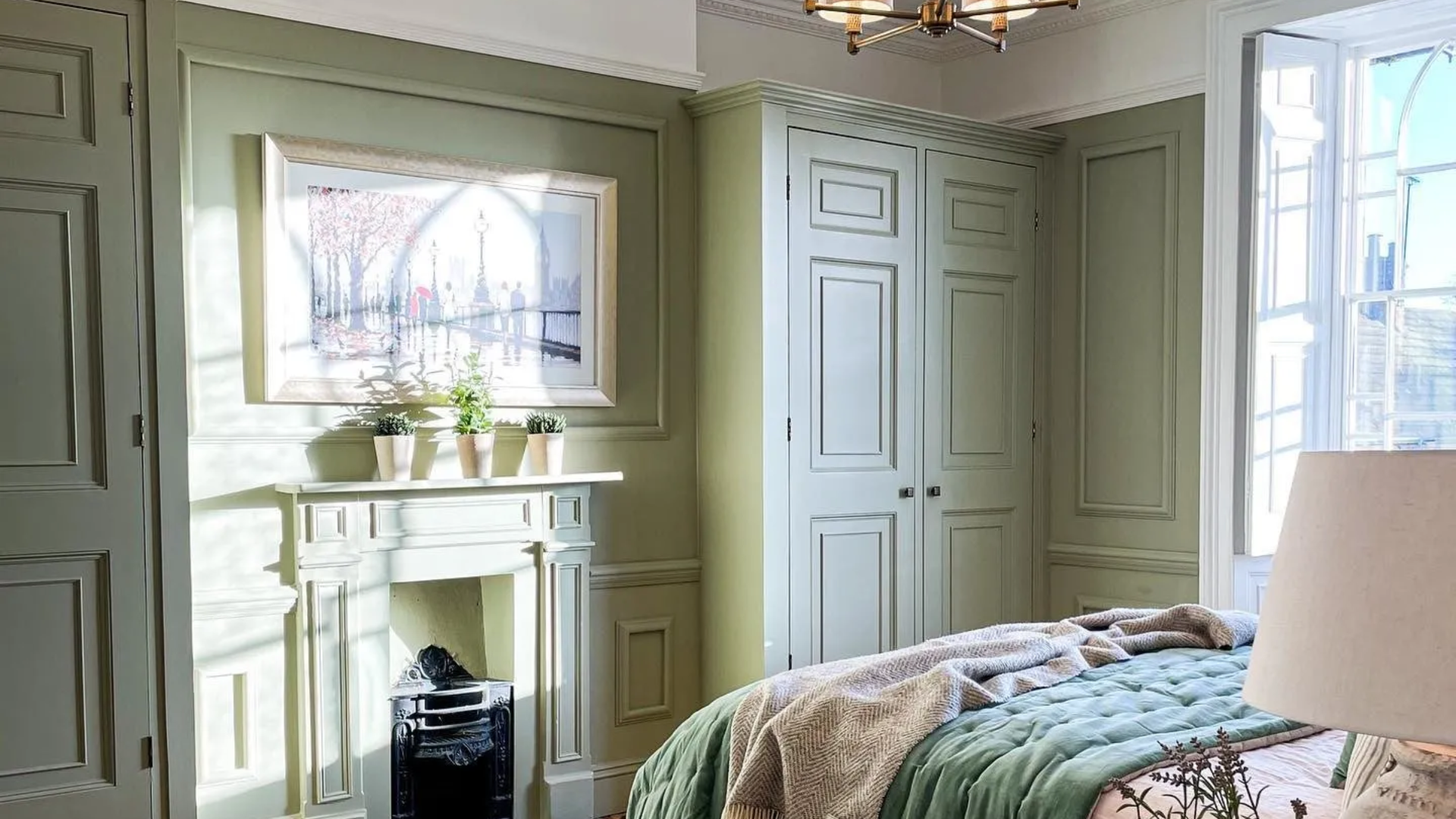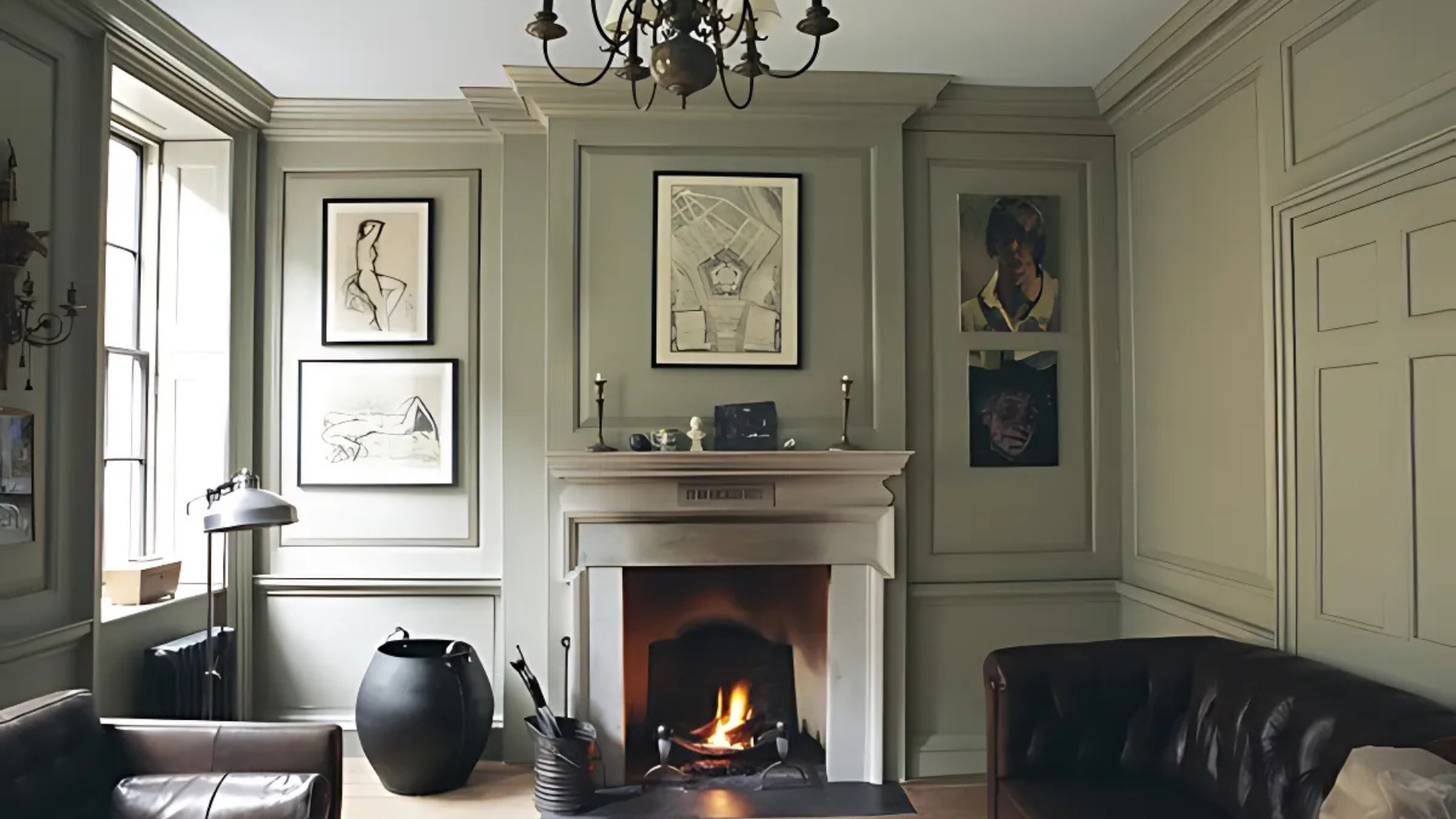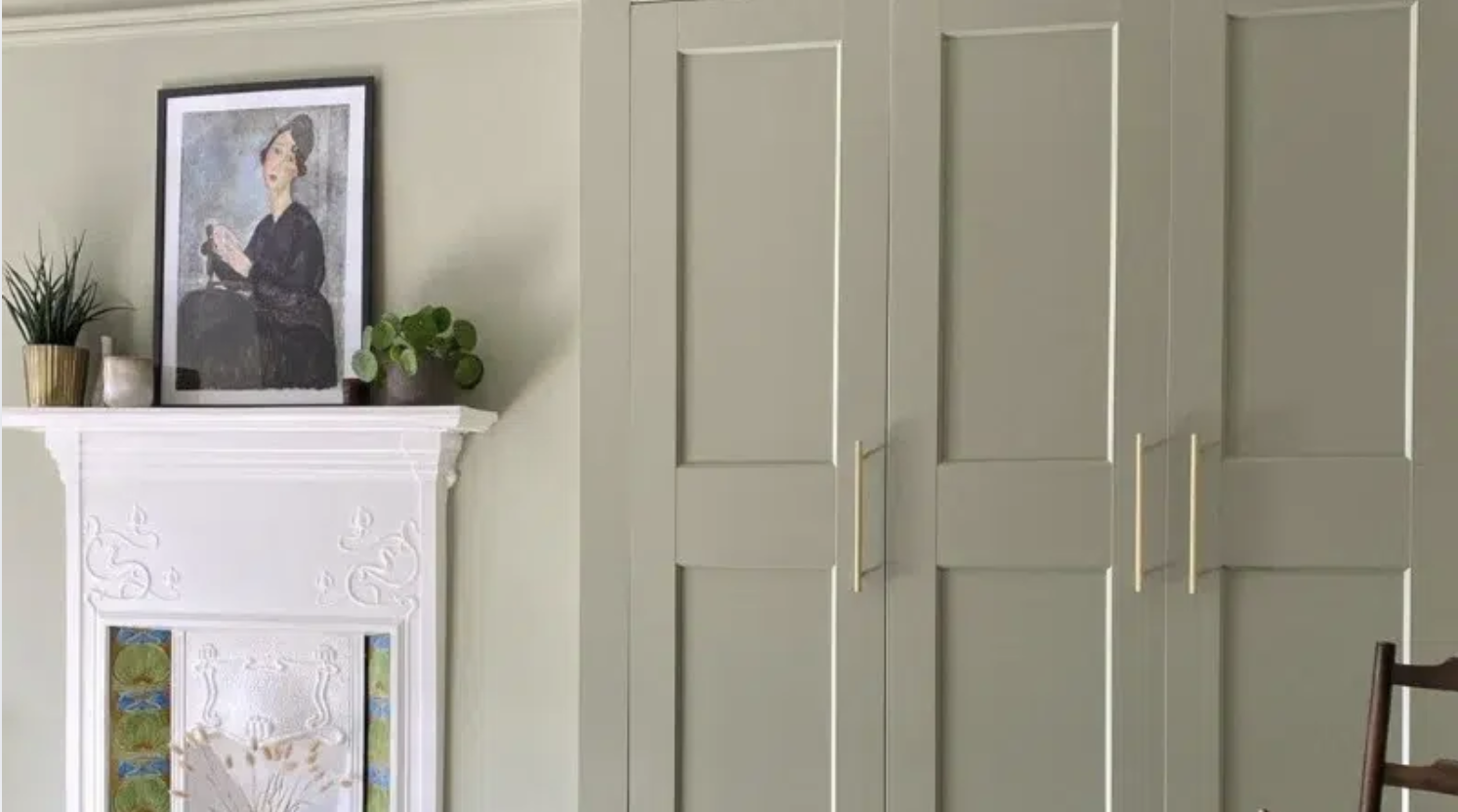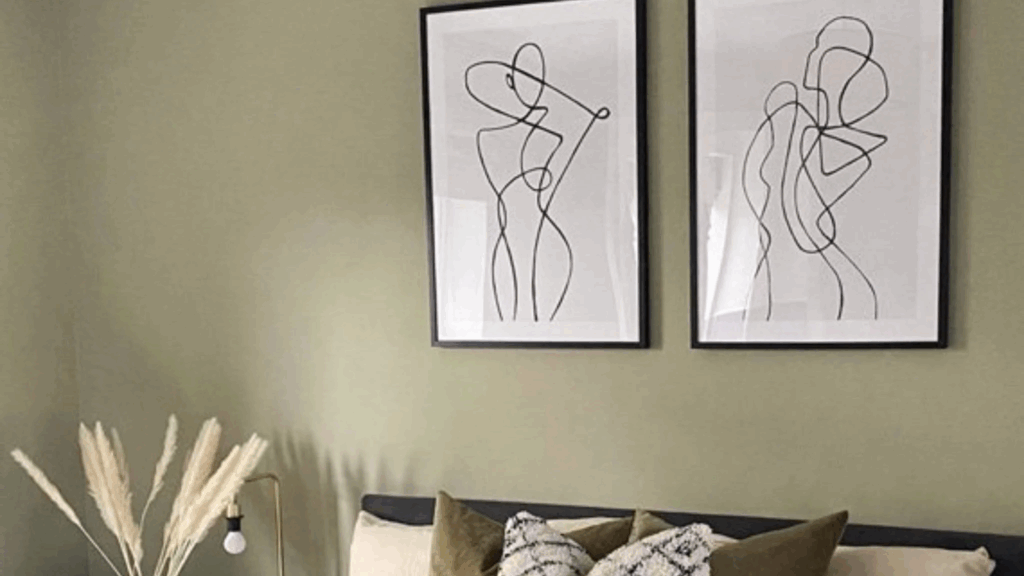Farrow and Ball is known for creating rich, thoughtful paint colors. Their paints are often chosen by people who want something that feels calm and lived-in. One of the most talked-about shades in their collection is French Gray.
French Gray is not a flat gray. It carries hints of green that show up more or less depending on the light. This soft, balanced mix is part of why so many people keep coming back to it. It’s used in many homes that aim for a classic or natural look.
In this blog, I’ll tell you what French Gray really looks like, how it behaves in different rooms, and which tones work well with it.
I’ll also examine how it compares to other popular shades and how to use it in your home. If you’re wondering if French Gray is right for you, this review will help you feel more confident about your choice.
Is Farrow and Ball French Gray (No.18) a Good Color?

French Gray is one of Farrow and Ball’s most-used paint colors—and for good reason. It has a soft green-gray mix that feels calm and grounded. Many people choose it when they want a space that doesn’t feel too dark or too bright.
Designers often recommend French Gray because it works in a wide range of homes. It doesn’t stand out too much, but it still adds interest. It also pairs well with natural materials like wood and stone.
French Gray works best in rooms where you want a soft, steady background. It’s a favorite for bedrooms, entryways, and calm living spaces. If you like colors that feel relaxed, French Gray is worth a closer look.
What Kind of Color Is French Gray by Farrow and Ball?
French Gray is not a true gray. It’s a soft color that balances green and gray. Depending on the light, it can look greener or more muted.
It sits in the middle of the color spectrum. It’s not too cool, not too warm. That makes it easy to use without making a room feel cold or yellow.
The name “gray” can be a little misleading. If you expect a flat gray, this shade may surprise you. French Gray has a natural, earthy look that brings more life than a basic neutral.
The Undertones of French Gray
French Gray has a mix of green and gray undertones. These undertones shift with the light and with what you pair it with in the room, giving it its soft, blended look.
In some rooms, the green tone comes forward more. In others, it looks more muted and gray. It depends on both the time of day and the kind of lighting used.
These shifts are part of what makes this color interesting. That’s why testing a sample in your space is so important. Seeing it at different times helps you know how it will really feel.
How does Lighting affect French Gray?

French Gray changes a lot with lighting. In the morning, it may look cooler and slightly more gray. As the day goes on, natural light brings out the green tone more clearly.
In north-facing rooms like mine, it tends to feel more muted and cool. In south-facing rooms, the warmer light can make the green side stand out. The direction of light really matters with this color.
It’s important to test French Gray on your own wall. A sample patch in the space you plan to paint helps you see how it shifts. What looks perfect in one home might feel different in yours.
Where to Use French Gray in Your Home?
French Gray works in many areas of the home. It brings a soft, calm feel that fits well in both large and small spaces. You can use it as the main color in a room or just on one wall to add interest.
Bedrooms: I find this color great for creating a calm, restful space where I can unwind. It brings a peaceful energy that’s perfect for sleeping areas.
Kitchens: It pairs beautifully with natural wood tones and soft lighting, making the space feel warm and welcoming without being too bright or overpowering.
Bathrooms: This shade gives a clean, spa-like feel—perfect for starting or ending the day in a soothing environment.
Entryways and Hallways: It adds warmth and style without making the space feel too dark or closed in, which is ideal for areas that don’t always get a lot of natural light.
Accent Walls: If you want contrast but nothing too bold, this color works well to create visual interest without overwhelming the room.
Cabinets and Furniture: I love how it adds character to built-ins and vanities, giving them a subtle charm that still stands out.
French Gray is flexible enough to use on walls or woodwork. It helps your space feel steady and natural without pulling focus away from the rest of your decor.
Colors That Pair Well with French Gray
Choosing the right colors to complement French Gray can help bring the whole room together. Since it has green and gray tones, it pairs well with both cool and warm shades.
- Trim: soft white or off-white
- Ceilings: warm white or a slightly creamy tone
- Accent colors: muted greens, soft browns, or gentle blues
- Wood tones: oak, walnut, or pine
- Furniture: light tan, soft gray, or black for contrast
These colors help French Gray look its best without clashing. Stick with soft, natural shades for a calm and balanced space.
French Gray vs. Similar Colors from Other Brands
French Gray has a soft green-gray tone that many people love, but it’s not the only color like this on the market. Paint brands like Benjamin Moore and Sherwin-Williams offer shades that come close. Each one has small differences in warmth, depth, and feel.
| Brand & Color Name | Undertones | Feel in a Room |
|---|---|---|
| Farrow & Ball French Gray | Green-gray | Calm, steady, with a natural feel |
| Benjamin Moore Saybrook Sage | Muted green | Earthy and soft, slightly warmer |
| Benjamin Moore Gray Cashmere | Green-blue-gray | Lighter and more airy |
| Sherwin-Williams Sea Salt | Green with a touch of blue | Fresh, light, and beachy in feel |
| Sherwin-Williams Comfort Gray | Cool green-gray | Cooler and more modern in tone |
French Gray may still be the better pick if you want a balanced, steady color that brings a quiet warmth. It works well in both traditional and modern rooms without feeling too sharp or too pale.
How to Use French Gray Successfully?

To get the best results with French Gray, it’s important to test the color first. Paint small patches on different walls and check them at different times of day.
Light changes how the color looks, and this simple step can help you avoid picking the wrong shade.
The type of paint finish you choose also makes a big difference. Farrow and Ball’s Estate Emulsion has a soft, matte look that works well in bedrooms and low-use areas.
If you need something stronger, Modern Emulsion is a better choice. It’s more washable and works better in kitchens, bathrooms, and hallways.
French Gray can be used on more than just walls. It looks great on trim and cabinets, too. For wood, be sure to sand and prime the surface first. Then apply smooth, even coats for a clean finish.
With the right prep, this color can bring calm and balance to many parts of your home.
Maintenance and Long-Term Results
French Gray is not just easy on the eyes—it also performs well over time. If you use the right finish for the space, it can stay looking clean and smooth for years, even in busy parts of your home.
- Durability: Modern Emulsion finish resists scuffs and works well in high-traffic areas
- Wear in daily use: Holds up well in kitchens, hallways, and entryways
- Touch-ups: Easy to blend in when you need to fix small marks
- Cleaning: Wipeable with a soft cloth and gentle cleaner—no scrubbing needed
- Finish matters: Matte finishes are better for low-use areas; tougher finishes are best for busy spaces
With the right prep and paint type, French Gray can keep its soft look without much upkeep. It’s a color you can live with for the long run without a lot of work.
Conclusion
French Gray by Farrow and Ball stands out for its calm green-gray tone. It’s a steady color that works with soft whites, wood finishes, and many natural materials. It doesn’t take over a room but helps everything feel more settled.
This shade looks great in spaces that get soft light and in rooms where you want a peaceful feel. It fits well in bedrooms, living rooms, kitchens, and even entryways. The gentle green undertone adds a natural touch without being too bold.
If you’re thinking about trying French Gray, test it first on your wall. Light changes everything, and seeing it in your space makes a big difference.
A small sample can save you time and give you peace of mind. French Gray might just be the color that ties your home together in a quiet, easy way.
Frequently Asked Questions
Can French Gray Be Used On Exterior Walls?
Yes, French Gray can be used outside, but only with the proper exterior finish. It works well on brick, wood, or render and gives outdoor spaces a soft, natural look. Make sure to choose the right Farrow and Ball exterior paint for lasting results.
Can French Gray Be Used With Wallpaper?
Yes, French Gray pairs nicely with many styles of wallpaper. It works especially well with floral, striped, or textured patterns that have soft green or neutral tones. It can be used on surrounding walls, trim, or even the ceiling for a balanced finish.
What Is the Best Primer to Use With French Gray?
Farrow and Ball recommends using their own primer, called Interior Primer & Undercoat, for best color results. It helps the paint go on smoothly and brings out the true tone of French Gray, especially over darker or patchy surfaces.

